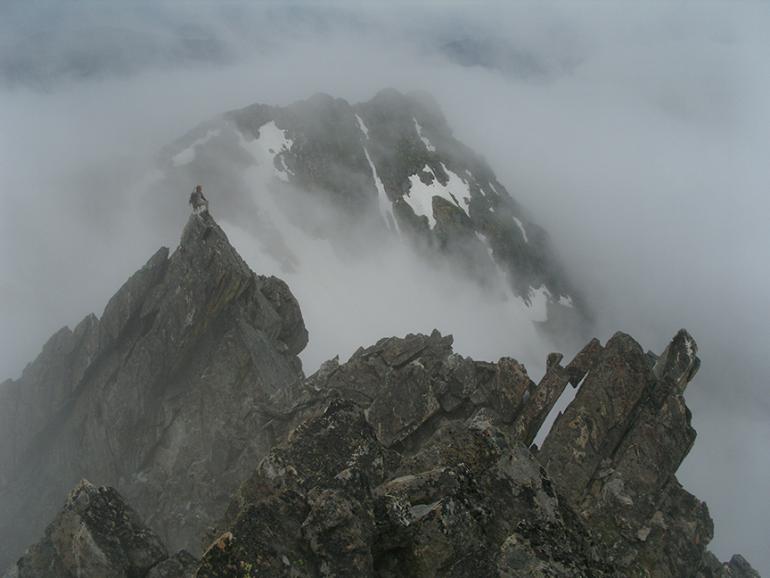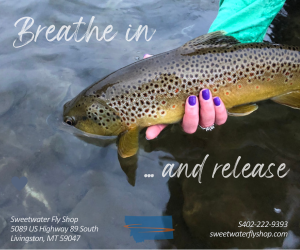Get Higher
What you need to know about altitude sickness.
Altitude sickness, also known as Acute Mountain Sickness (AMS), is caused by lack of oxygen at higher elevations. While AMS doesn’t conjure up as much fear as a grizzly encounter or lightning storm, it can be fatal if not addressed properly. Whether you’re a lifelong Montanan or here on vacation, it’s important to know the warning signs, how to deal with them, and what steps you can take to prevent AMS if you are traveling above 6,500 feet.
We can live weeks without food, days without water, but only minutes without oxygen. Oxygen is essential because we use it to generate most of the molecular energy we need to function. The higher we drive, hike, and climb, the less available oxygen there is, preventing normal function and causing damage.
Sea-level air has oxygen content of 20.9%. It drops to 16.2% at West Yellowstone’s altitude of 6,600 feet, and AMS can start as low as 6,500 feet. At 8,000 feet, the probability of developing symptoms of AMS is one in five. It is double that by 10,000 feet. Climbing Sacajawea Peak takes you to 9,839 feet. Driving the Beartooth Highway puts you almost 11,000 feet above sea level and 13.7% oxygen. Granite peak, the highest point in Montana, is 12,808 feet above sea level with 12.8% oxygen.
The initial symptoms of AMS can be headache, fatigue, loss of appetite, nausea, vomiting, feeling dizzy or lightheaded, pins-and-needles sensation, insomnia, swollen hands and feet, shortness of breath, and persistent rapid pulse… all made worse with exertion. Often these early symptoms of AMS are mistaken for a hangover or a viral infection. If not addressed, AMS can progress to edema—swelling in the brain and lungs—which can be fatal.
An early warning sign of edema in the brain is poor balance and difficulty walking. Confusion, drowsiness, and stupor are other symptoms, which can lead to a coma and death in a few hours. Edema in the lungs is more common in men and is the most common cause of death in AMS. Climbing with a viral infection, such as a cold, increases the risk. A persistent dry cough, coughing up blood, difficulty breathing, and a bluish skin color are symptoms of pulmonary edema, and should not be ignored at higher altitudes.
If you notice any signs of AMS, descend at least 1,000 feet. The goal is to get more oxygen. The more severe the condition, the more oxygen and other interventions will be needed, which will require hospitalization in the case of cerebral and pulmonary edema. Initially, people often take pain medication for their headaches, but this only masks the symptoms and can allow the AMS to progress. Most cases of AMS are mild and will resolve themselves at lower elevations in 24 to 48 hours.
To help prevent AMS, increase your altitude slowly and give yourself a day or two to acclimate to the higher elevation. There is no relationship between physical fitness and AMS susceptibility, so don’t get cocky. Once you hit 10,000 feet, don’t climb more than 1,000 feet per day. Be sure to sleep at a lower elevation than you climbed that day, and don’t sleep higher than 1,000 feet from the previous night. Exertion, cold, and dehydration all increase the risk of developing AMS; rest if tired, stay warm, hydrate, and avoid alcohol. If you are taking little ones on the trek, watch them closely as they are more susceptible to AMS. The drug Diamox reduces the risk and symptoms of AMS, and Ginkgo Biloba is an herb that’s been reported to help lessen symptoms. Diamox works best if started two days prior to gaining altitude. Start Ginkgo two weeks prior. Drink extra water if taking Diamox, as it causes dehydration.
Editor's note: This article is written specifically for Montana mountains. Treks to higher peaks (above 13,000 feet) may require additional precautions and actions.
Lou Walters is a naturopathic physician at The Source Wellness Center. For more information, visit TheSourceWellnessCenter.com.











